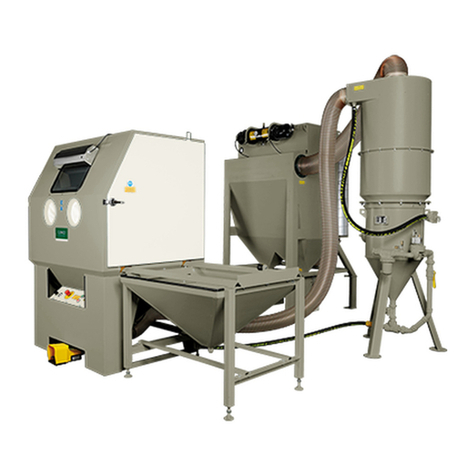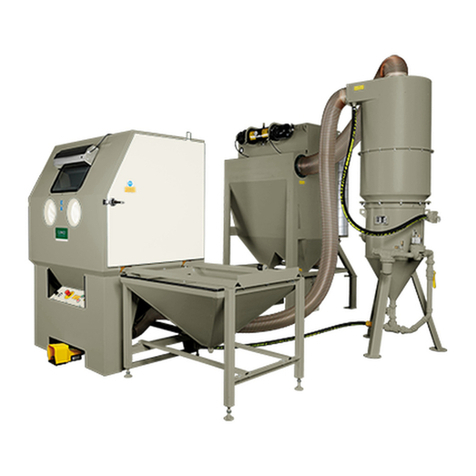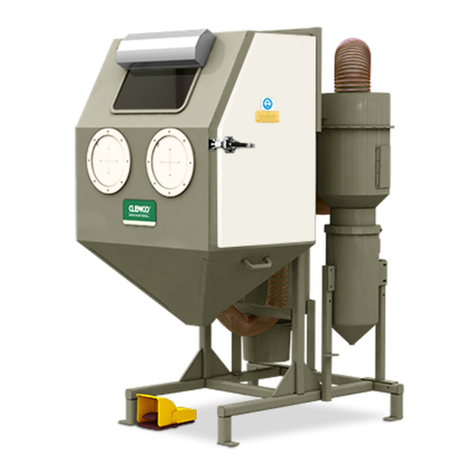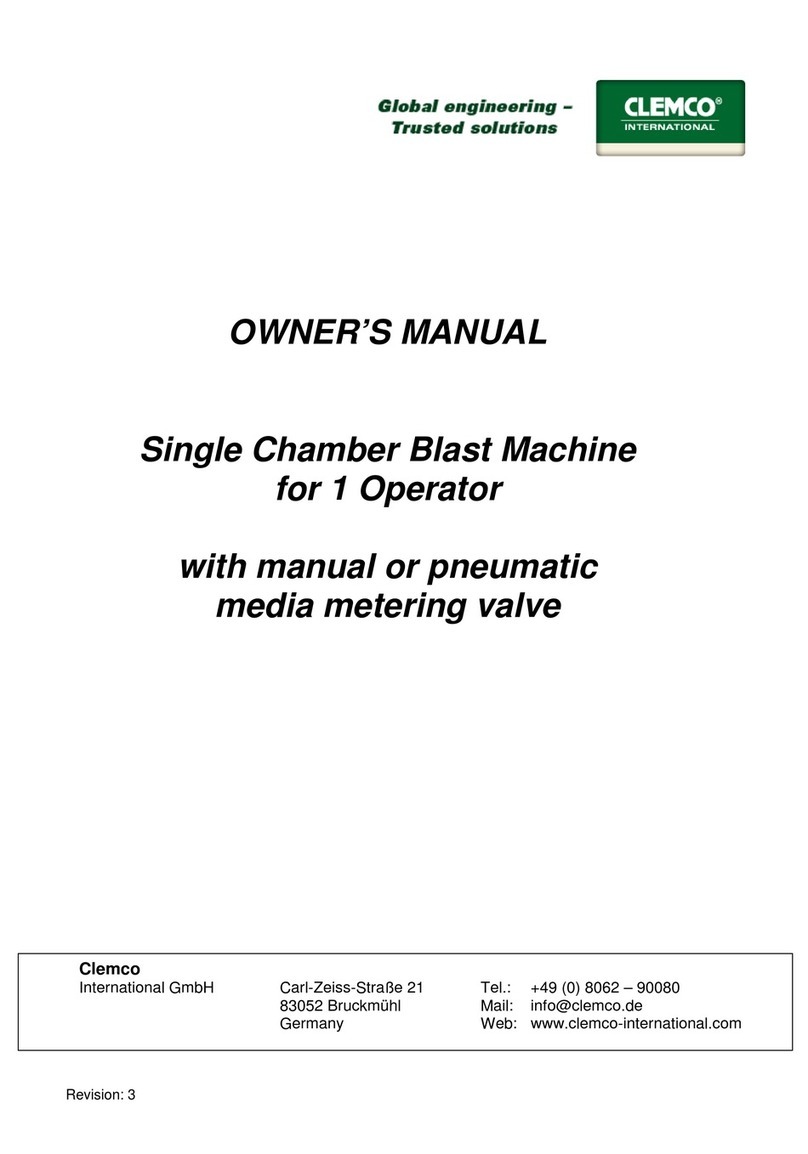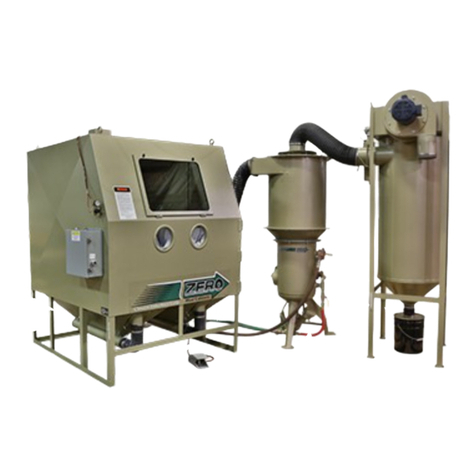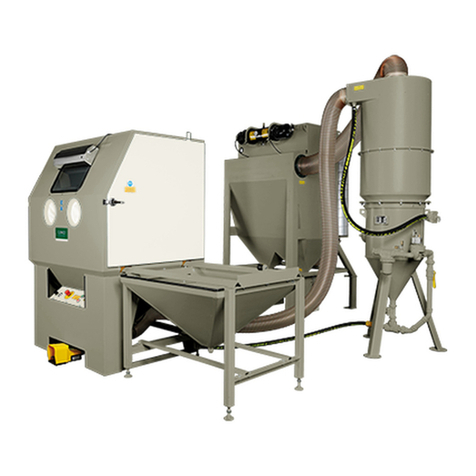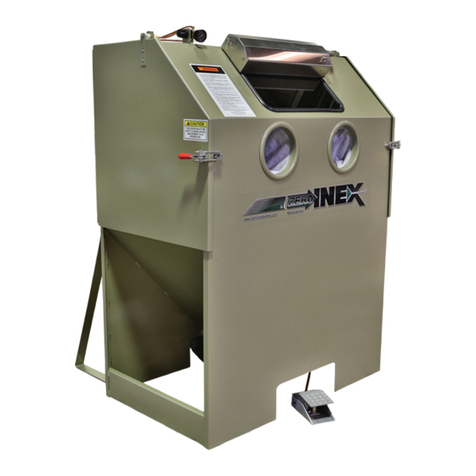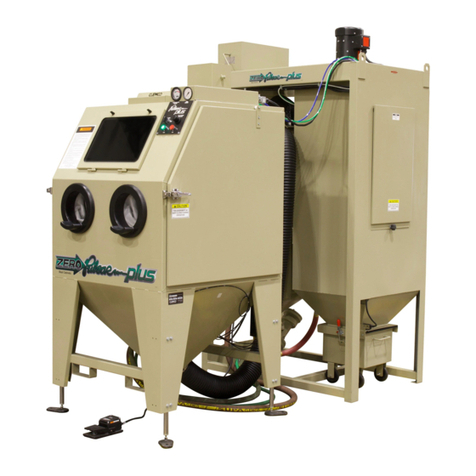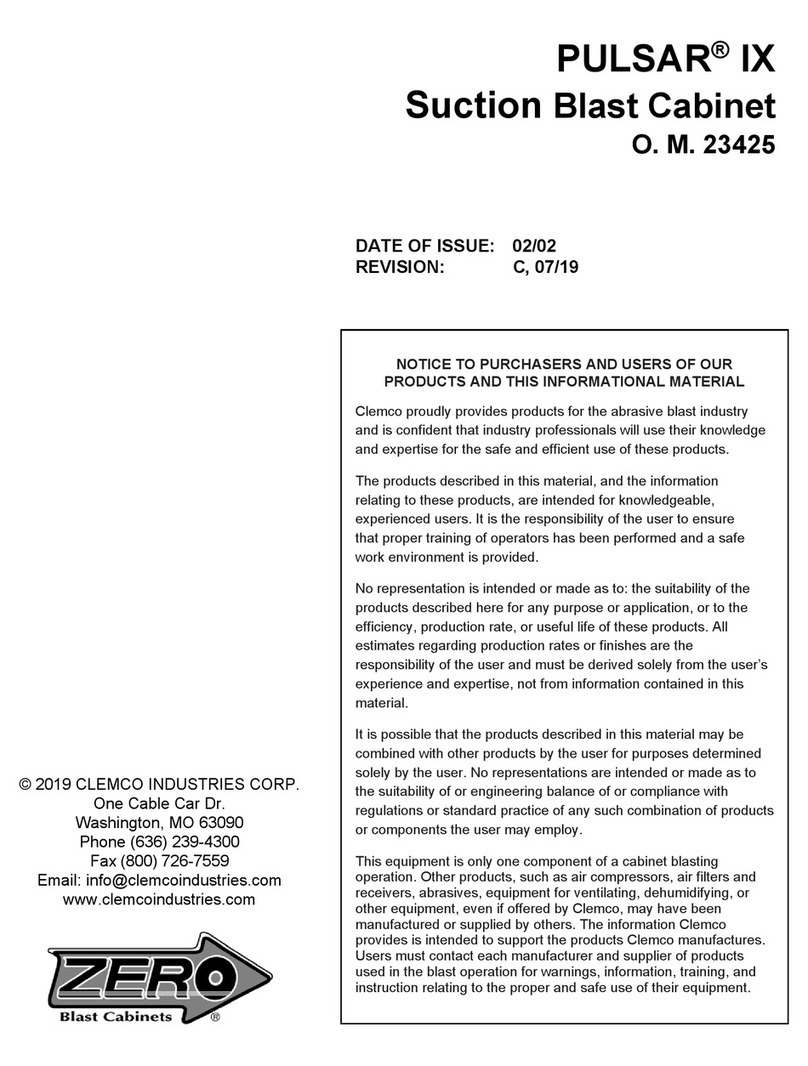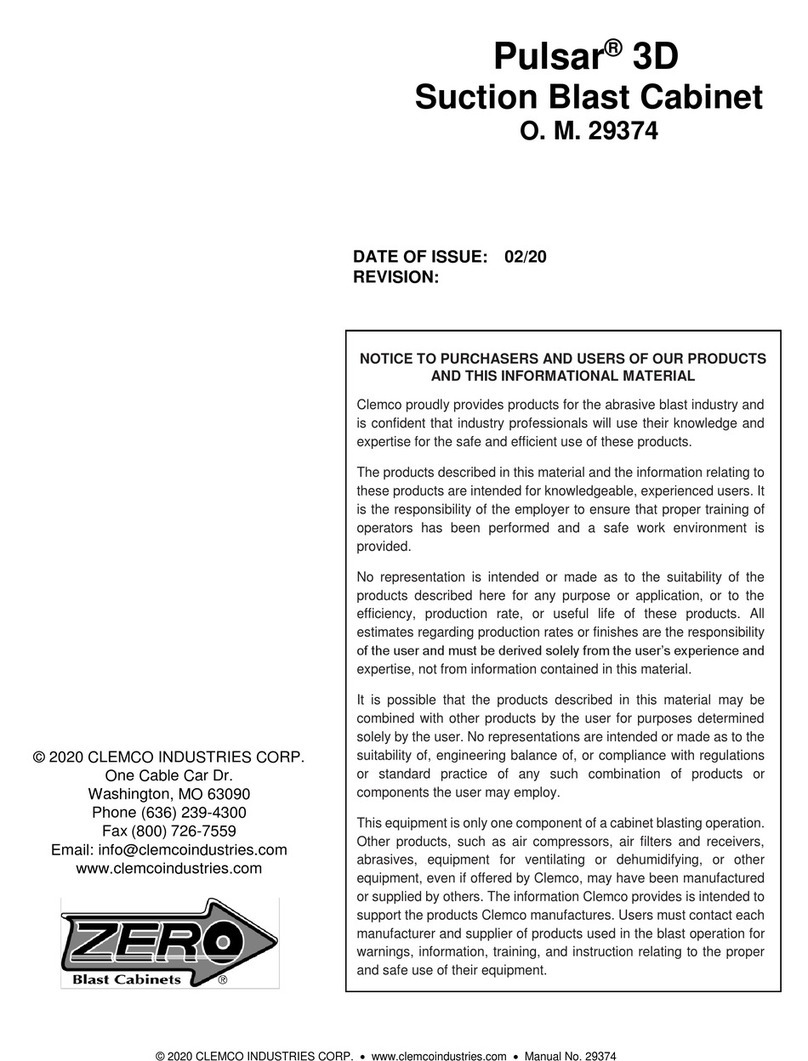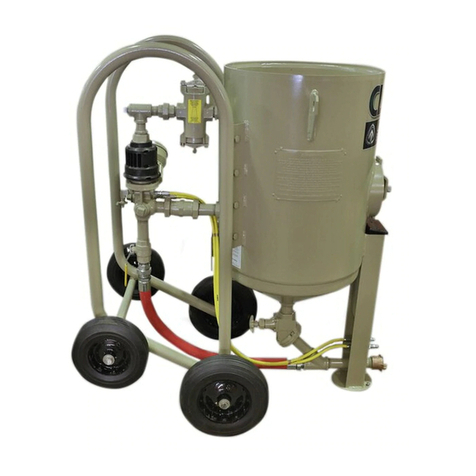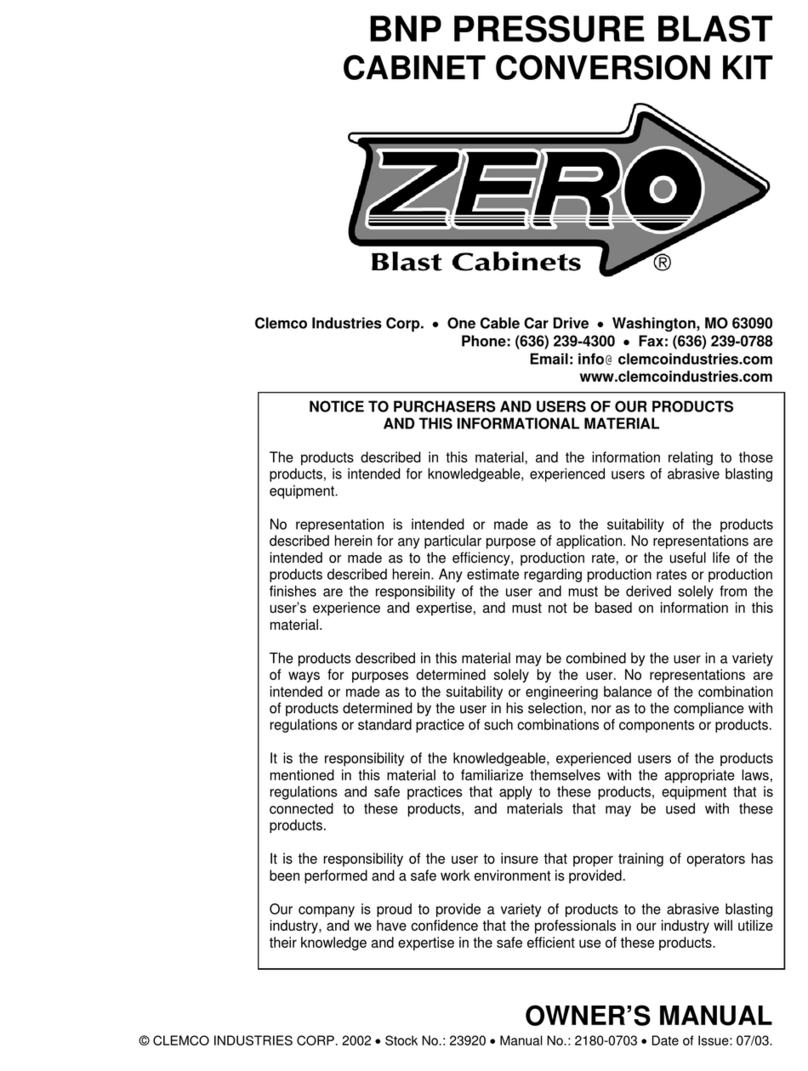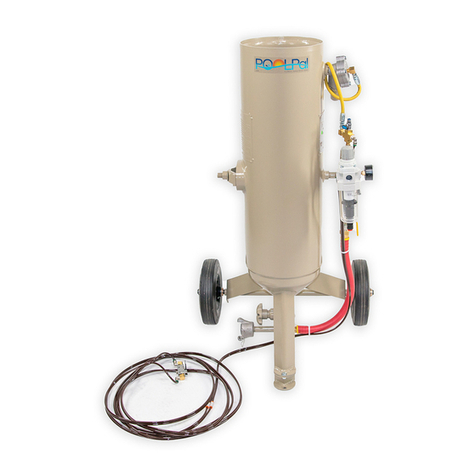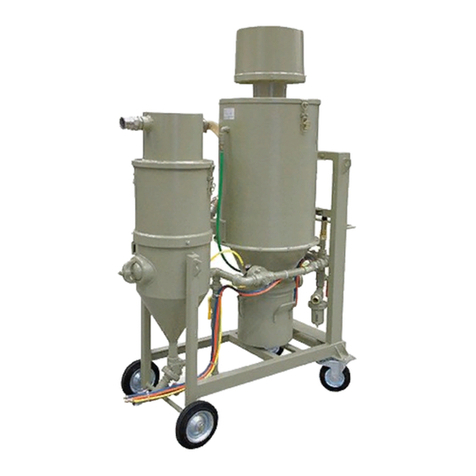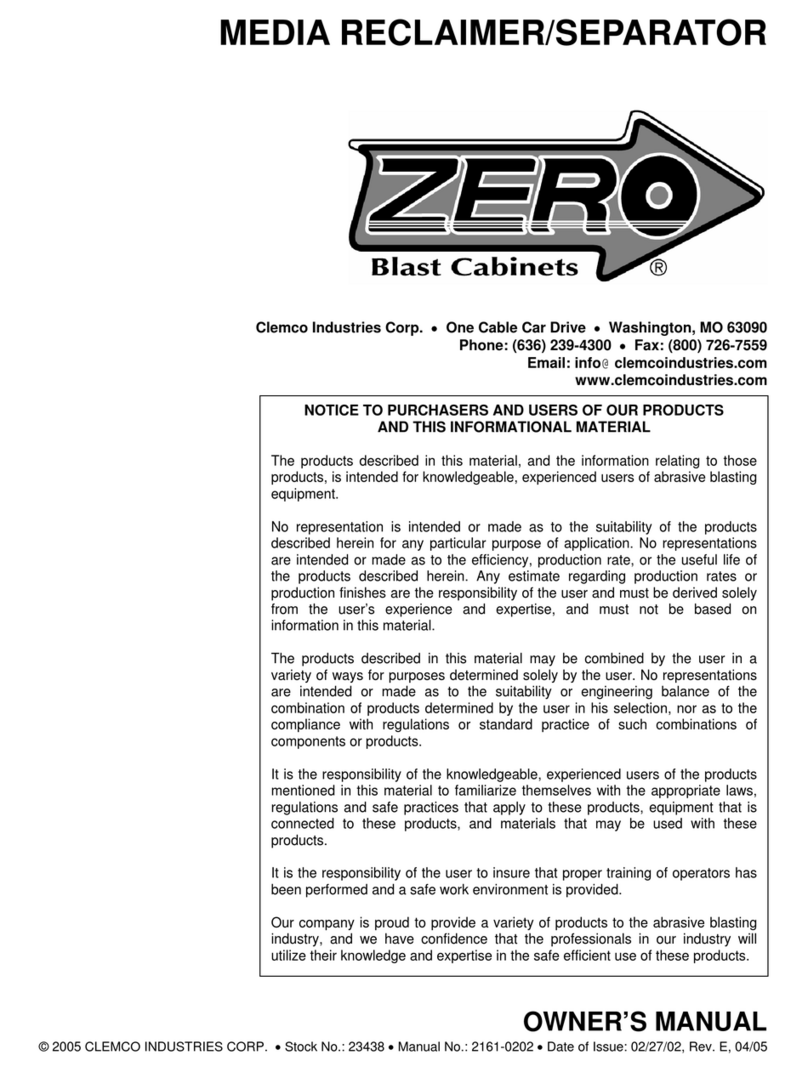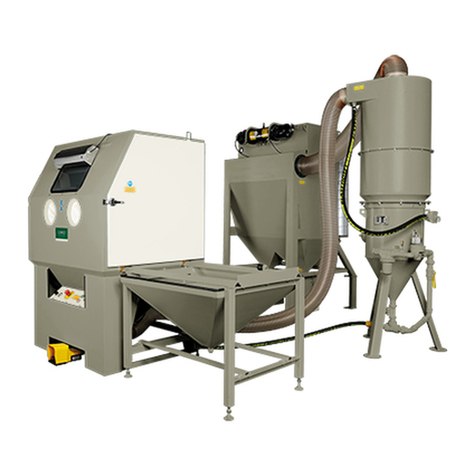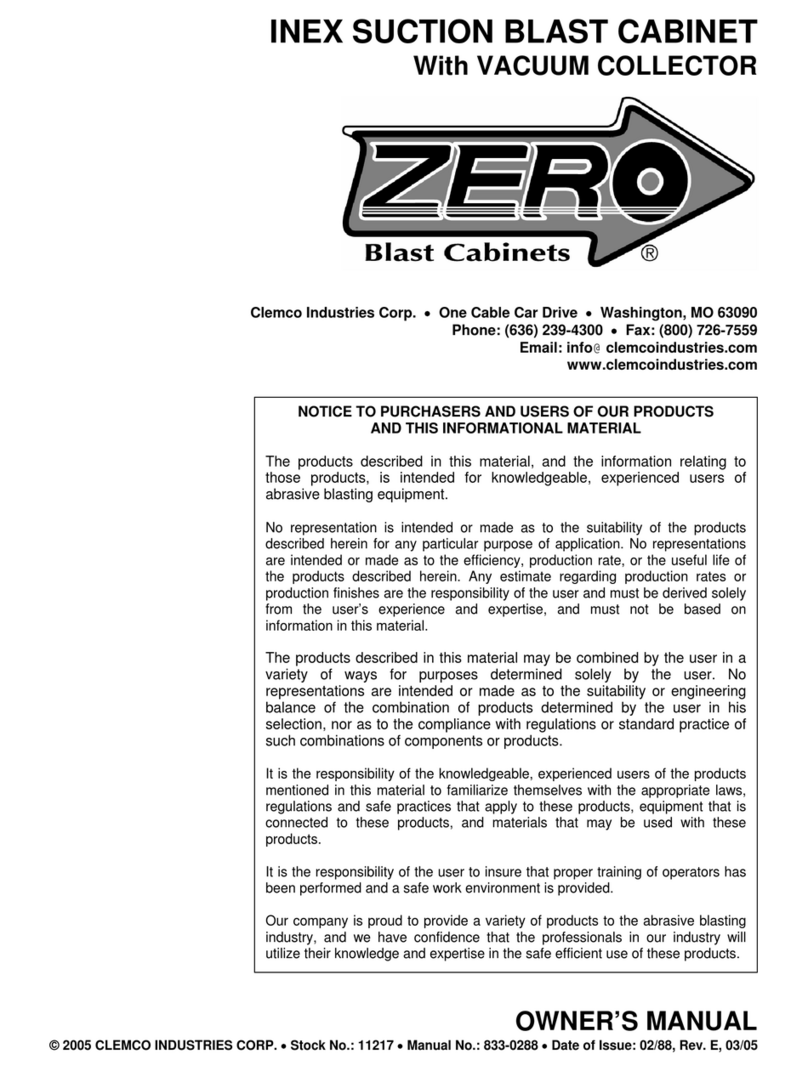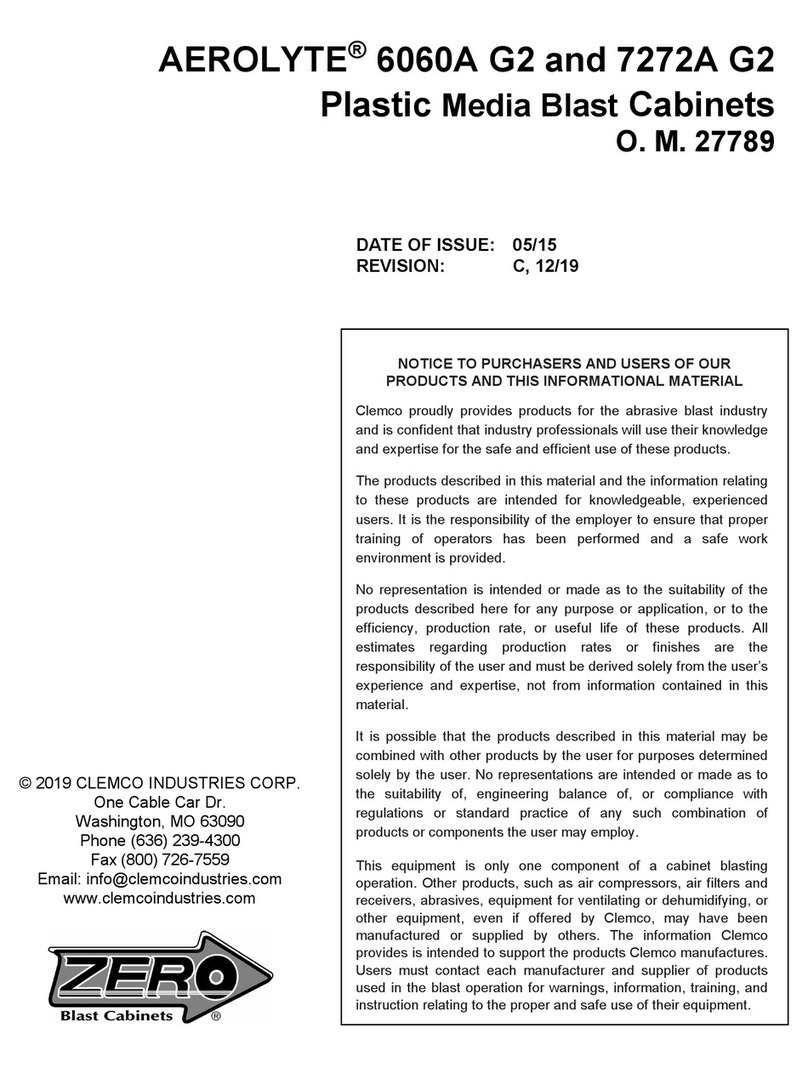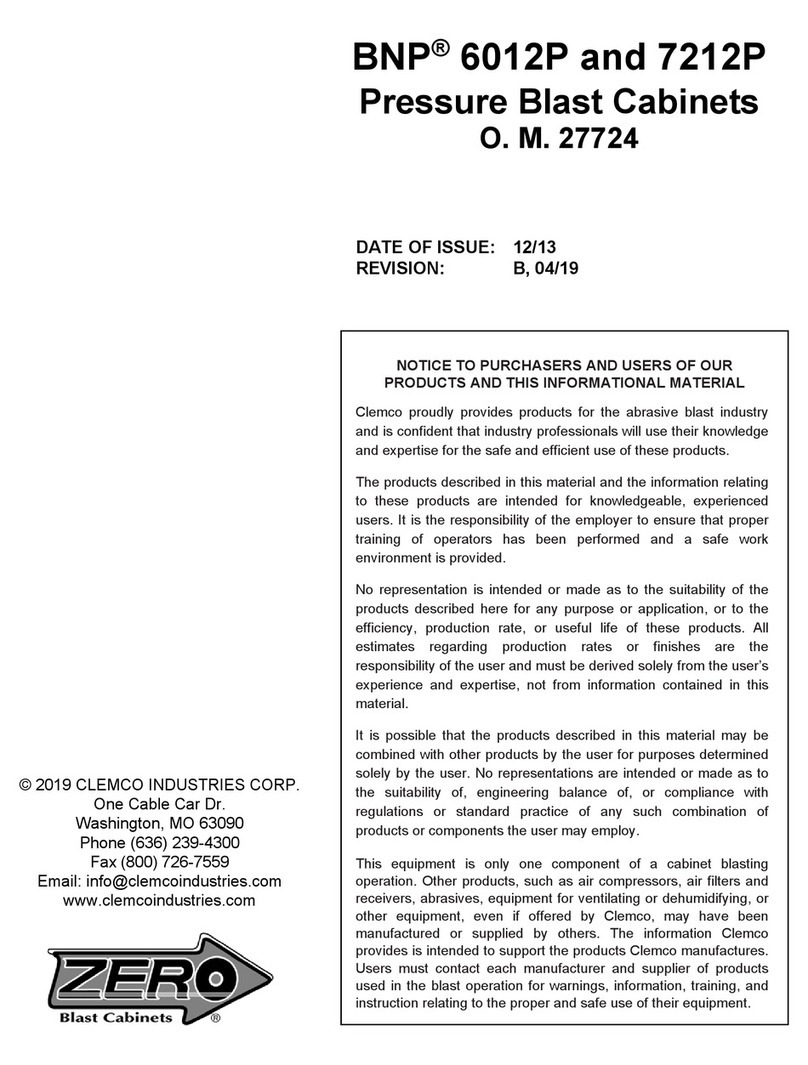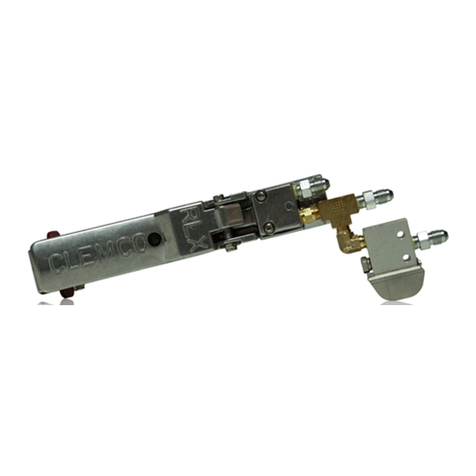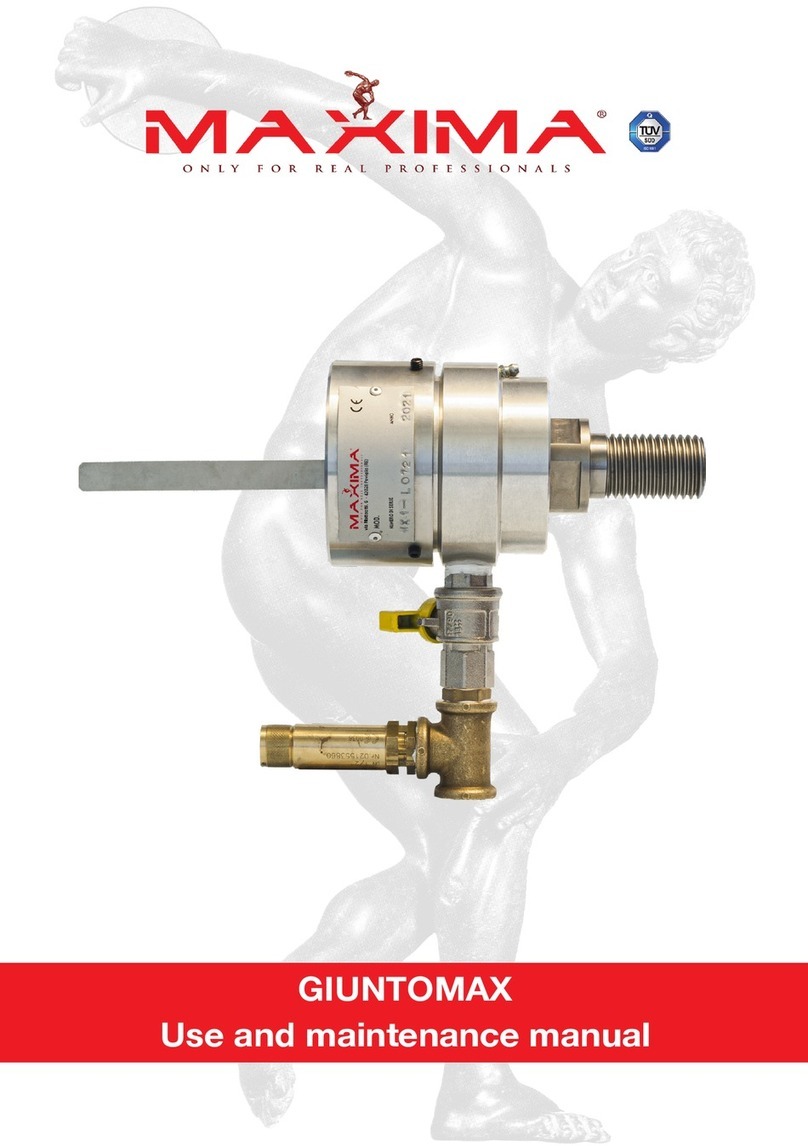
PULSAR®55se ERGONOMIC SUCTION BLAST CABINET Page 3
© 2015 CLEMCO INDUSTRIES CORP. www.clemcoindustries.com Manual No. 25727 Rev. C
As a rule, larger air jets and nozzles deliver more media,
thus requiring more performance from the reclaimer.
Therefore, larger nozzles decrease the maximum mesh
size of media from those normally recommended. On
the other hand, leaner media flow and lighter or less
dense media may increase the maximum usable media
size. Media finer than those recommended may
decrease visibility, and increase carryover to the dust
collector. Media coarser than those recommended may
be too dense for the reclaimer to recover from the
cabinet hopper.
1.7.2 Steel: Steel grit or shot should not be used with
the Pulsar® 55se cabinet. The cabinet is too small to
prevent peening of the cabinet weldment, and the
reclaimer is too small to efficiently convey ferrous,
metallic media.
1.7.3 Sand and Slag: Sand should NEVER be used
because of the respiratory hazards associated with media
containing free silica. Slags are not recommended
because they rapidly breakdown and are not recyclable,
making them unsuitable for cabinet applications.
1.7.4 Silicon Carbide, Aluminum Oxide, and
Garnet: These are the most aggressive of the
commonly used media. Aggressive media may be used,
but the service life of any equipment components
exposed to the media will be reduced. To avoid
unscheduled down time, periodically inspect the
reclaimer wear plate, exhauster housing and paddle
wheel, blast hose, and nozzle for wear.
When using aggressive media, install an optional
aluminum oxide kit. The kit includes rubber curtains for
the cabinet interior and a boron carbide lined nozzle.
Nozzles lined with boron carbide extend nozzle wear life.
See Optional Accessories in Section 9.1
1.7.5 Glass Bead: No. 6 to No. 12 glass bead are
recommended for the Pulsar® 55se. Most beads are
treated to ensure free-flow operation even under
moderately high-humidity conditions. Glass beads
subjected to excessive moisture may be reused after
thorough drying and breaking up of any clumps.
1.7.6 Plastic Media: Plastic and similar lightweight
media are generally not recommended in suction style
cabinets. Plastic media blasting usually requires a blast
machine with a 60-degree conical bottom. Refer to
Clemco’s AEROLYTE brand.
1.8 Compressed Air Requirements
1.8.1 The size of the compressor required to operate
the cabinet depends on the size of the air jet and
blasting
pressure. Unless otherwise specified, cabinets are
supplied with a No. 5 (5/32" orifice) jet. Refer to the table
in Figure 2 to determine cfm requirements. Consult with
a compressor supplier for suggested compressor size
based on the maximum air consumption.
Air Consumption in cfm
BNP Gun Jet Nozzle CFM PSI
No. 4 1/8" 5/16" 21 80
No. 5 5/32" 5/16" 32 80
*No. 6 3/16" 3/8" 47 80
* Using a No.6 jet and nozzle in applications that
produce excessive dust may cause poor visibility.
The 300 cfm reclaimer may not recover heavy,
coarse abrasive from the cabinet hopper when
using a No. 6 jet and nozzle combination.
Figure 2
1.8.2 The air filter at the air inlet connection reduces
condensed water from the compressed air. Its use is
especially important in areas of high humidity, or when
fine-mesh media are used. Moisture causes media to
clump and inhibits free flow through the feed assembly.
If the filter does not remove enough moisture to keep
media dry and flowing, it may be necessary to install an
air dryer or aftercooler in the air supply line.
1.9 Electrical Requirements
1.9.1 Electrical requirements depend on the size and
phase of the motor. Standard cabinets are supplied with
300 cfm reclaimer, using 1/2 HP, 115/230V, 1-PH, 60
HZ motors, wired for 115 volts.
1.9.2 A power cord with u-ground plug is provided.
2.0 INSTALLATION
2.1 General Installation Notes
2.1.1 Select a location where compressed air and
electrical service are available. The cabinet location
must comply with OSHA and local safety codes. Allow
for full access to all doors and service areas and for
efficient handling of parts. Make sure there is room to
load media and to remove spent media. Determine the
best location, and position the unit before making final
connections.
